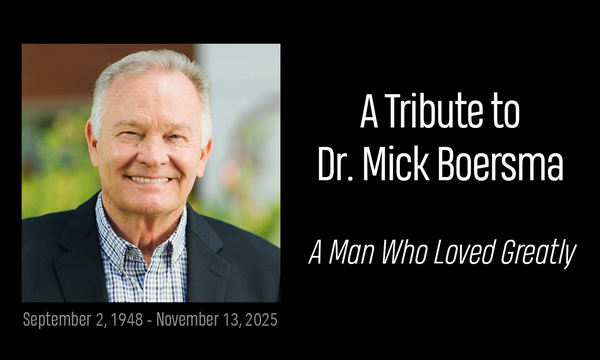Questions related to origins are some of the most divisive in the church today: How old is the earth? Is there good evidence for intelligent design? Did God use evolution? Sadly, rather than discussing differences in a sober and gracious manner, conversations are often characterized by defensiveness, misunderstanding, and personal attacks. What a shame!
But this need not be the case. The recent book Old-Earth or Evolutionary Creation? demonstrates that leading voices in the origins debate can come together and wrestle over big questions of faith and science with both “gentleness and respect” (1 Peter 3:15).
This book is the culmination of a decade-long formal conversation between scientists, philosophers, and theologians from the old-earth creationist organization Reasons to Believe (RTB) and evolutionary creation (theistic evolution) organization BioLogos, as well as a group of Southern Baptist (SB) seminary professors.
One of the Southern Baptist moderators describes the major purposes of the book as demonstrating that “two creationist organizations can strongly disagree with one another while treating one another with Christian charity, respect, and a willingness to seriously consider the merits of an opposing position.”[1] This mission was clearly accomplished in the book.
If you are interested in questions of the interaction between science and faith, then this book is a must-read. Even if you hold to a young-earth position, which is not represented in this book, you will find the give-and-take invaluable.
While much could be said about the book, the most valuable part to me was that it surfaces key underlying assumptions that drive how both sides interpret the evidence. RTB and BioLogos frequently agree on the scientific facts, but their conclusions vary because they bring different philosophical and theological lenses to the data. Let me offer a couple examples.
The Interaction Between Science and Scripture
First, both organizations approach the philosophical question of the interaction of science and Scripture differently. RTB holds a soft-concordist view, which means they believe there is some overlap between biblical claims and science. Specifically, they believe science confirms some Scriptural claims such as the origin of the universe (Gen 1:1) and the unique creation of Adam (Gen 2:7).
On the other hand, BioLogos writer Jim Stump looks at the natural world through two different lenses—scientific and personal (chapter 6). Thus he doesn’t expect any overlap between scientific claims and Scripture because, from his perspective, the two operate on different levels of explanation.
There are also theological differences at the heart of how they interpret the interaction between Scripture and science. Writing for BioLogos, John Walton argues that God does not convey more meaning in Scripture than the original authors intended (except when NT authors add meaning to OT writers, which is an example of further divine inspiration). Thus, he is not tempted to look for modern scientific claims in ancient Scripture.
On the other hand, RTB philosopher Ken Samples argues that there can be deeper truths in Scripture beyond the intention of the original authors. Thus, he (and the RTB team) is inclined to look for scientific clues that find modern confirmation. In both cases, their underlying assumptions shape how they reconcile the interaction between science and Scripture.
Common Descent or Common Design?
Second, the two organizations have different assumptions about how God acts in the natural world. BioLogos is committed to natural mechanisms as driving the evolutionary process. Answering a question related to the size of their “tent,” BioLogos president Deborah Haarsma responds:
“Someone who disagrees with common ancestry would be outside the BioLogos tent. However, we welcome debate within BioLogos on questions currently debated in the scientific community, such as the relative importance of various natural mechanisms in evolution and whether genes or organisms are most central to the evolutionary story.”[2]
In contrast, RTB scholars believe that science can validate God’s direct involvement in physical history. Astrophysicist Jeff Zweerink explains:
“RTB affirms that just as the descriptions of the exodus and the battle of Jericho (Josh 6) give details that archaeologists and historians can validate, the creation accounts in Genesis 1-2, Job 38-41, Psalm 8, and elsewhere describe physical events that scientists can validate.”[3]
As a result of these differences, they tend to evaluate the evidence for evolution differently. For instance, Darrell Falk argues that one of the most compelling arguments for evolution is the genetic “scars” that exist in humans and chimps in the same location in the genome, which he says can only be explained by common ancestry.
In contrast, Fuz Rana believes genetic scars can also be explained by common design. He gives the example of a scar found on the tip of your finger because of a common initiation rite. In this case, the cut serves a common function for all club members, even if it seems purposeless and accidental to outsider observers. He interprets genetic “scars” through the same design framework.
My point is not to debate the issue here (my own perspective is much closer to RTB, which I have laid out in my book with William Dembski, Understanding Intelligent Design). Rather, to simply highlight how powerfully assumptions shape—not determine—how people interpret the data.
Much more could be said about this book. I enjoyed the chapters on the historical Adam, human evolution, methodological naturalism, natural evil, and more. In these cases, as the two above, the discussion clarifies underlying assumptions. To me, this is worth the price of the book.
Given both the quality of the content, and the generous spirit of interaction in this book, I hope it is just the beginning of many more common projects yet to come.
You can find the original version of this article on Sean McDowell's blog.
[1] Old-Earth or Evolutionary Creation? Discussing Origins with Reasons to Believe and BioLogos, ed. Kenneth Keathley, J.B. Stump, and Joe Aguirre (Downers Grove, IL: IVP Academic, 2017), 7.
[2] Ibid., 21.
[3] Ibid., 114.
 Biola University
Biola University


.jpg)
.jpg)